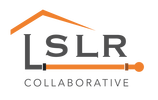|
See the full article online. The Illinois Environmental Protection Agency announced the launch of an online tool this week, making the data water systems are now required to report about materials, such as lead, in service lines search-able. The database, available on the agency’s website, contains numbers from the first cycle of reporting as set out in a 2017 amendment to the Illinois Environmental Protection Act. The information is on 3.7 million service lines in 1,659 of the state’s 1,743 community water systems. “This tool has been developed to provide added transparency to residents by identifying the make-up of public water distribution systems in Illinois,” Illinois EPA Acting Director John J. Kim said in a statement. “As inventories are completed by community water systems, we anticipate this tool will not only be used by residents, but also by public health officials as they investigate possible sources of lead exposure in children with elevated blood lead levels.”
The agency has received reports from 53 of the 54 community water systems across Brown, Cass, Greene, Morgan, Pike and Scott counties, according to spokeswoman Kim Biggs. The Patterson water system in Greene County is missing from the data. Statewide, there are more than 400,000 lead service lines and more than 300,000 copper service lines that may have been constructed with lead solder. Service lines connect the water mains in the system to buildings, like houses and businesses. There are 1,911 lead service lines and 532 copper lines that may have lead solder in Brown, Cass, Greene, Morgan, Pike and Scott counties. Of South Jacksonville’s 1,550 retail connections, there are 1,000 lead service lines and 400 copper lines that may have lead solder. Lead, which was commonly used in the construction of water lines and plumbing for decades, was banned nationwide in 1986. Pipes, pipe and plumbing fixtures, solder and flux still in existence that contain lead were installed prior to the ban, more than 30 years ago. In January 2017, the Illinois Environmental Protection Act was amended to require annual reporting of water distribution system material inventories by identifying the total number of service lines, the number of known lead service lines and the number of lead service lines added to the inventory year over year. Other types of materials used in service lines include galvanized piping, plastic and copper. More than 1.5 million service lines in Illinois were categorized as “unknown.” There are more than 11,000 unknown-material service lines in Brown, Cass, Greene, Morgan, Pike and Scott counties. Jacksonville makes up a large part of that total with 7,581 lines reported as “unknown.” Those numbers may be lower in next year’s report. The Illinois EPA is adding material categories — ductile or cast iron and transite — which were materials inventoried as unknown for 2017’s numbers. The agency has also heard from officials from some water systems that are working to identify materials used in their “unknown” lines. Bruce McKee, Pittsfield’s Gas and Water Department superintendent, said any time his department comes across a lead service line, they totally replace it, take it out of service and document the location. However, especially for some of the very old water lines, they don’t know what it will be until they dig into it. Pittsfield has 50 lead service lines and 625 categorized as “unknown.” McKee believes the majority of the lead lines are concentrated around the square — the oldest part of town. “We’ve not really run into any to speak of once we got a block or two away from the square,” he said. The state law just requires reporting and specifically does not require service lines to be “unearthed.” Changes to the law made alongside the service line reporting in 2017 require potentially affected customers to be notified of work on the system that may cause elevated contaminants in the system and created water-testing requirements specific to schools and day cares, according to the Illinois Rural Water Association. McKee said Pittsfield’s system is meeting EPA standards in its water testing, but he expects changes to those benchmarks are on the horizon. “Right now, we’re meeting the EPA requirements, but that is going to change and there will come a time where we will have to go service by service until we feel like we’ve gotten (the lead lines) eliminated,” he said. It will be costly for municipalities, as much in street damage as the utility infrastructure itself, he said, adding “it’s for a good cause.” “That’s just going to be the way it is and it’s only going to make a better drinking supply years down the road,” he said. -- LEAD SERVICE LINES Among the water systems with identified lead service lines are: • South Jacksonville — 1,000 • Beardstown — 700 • Jacksonville — 79 • Pittsfield — 50 • Winchester — 50 • White Hall — 30 • Barry — 24 • Roodhouse — 4 • Alsey-Glasgow Water Commission — 2 • Mount Sterling — 2 Comments are closed.
|
Have a suggestion for an article or blog to add?
Let us know! Type
All
Date
April 2023
|


 RSS Feed
RSS Feed